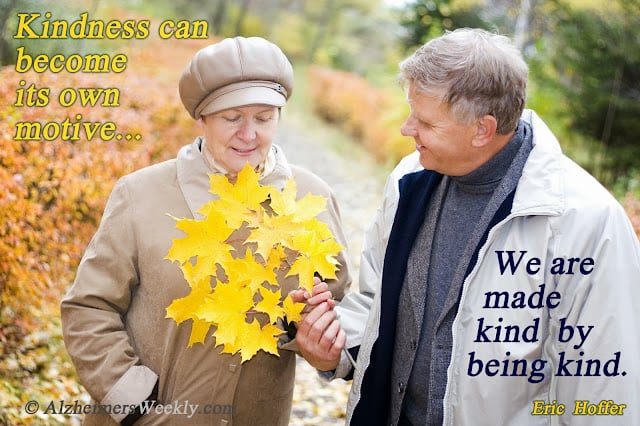
On Park Avenue in Rochester, New York, in a quiet office still enough to hold a secret, Lorrie Johnson listens for what isn’t being said. Not just the words, but the stories inside the breath, inside the pause, inside the body itself. Her clients may come seeking relief from depression, PTSD, eating disorders, or self-harm. But what they often discover is something deeper: a space where healing doesn’t mean being fixed, it means being heard.
“I’m not here to fix anyone,” Johnson tells me. “I’m here to walk beside them.”
A clinical social worker with a Master’s from the University at Buffalo and an adjunct professor at SUNY Brockport, Johnson integrates treatments like EMDR (Eye Movement Desensitization and Reprocessing), Brainspotting, and Ketamine-Assisted Psychotherapy. But it’s not the techniques that define her work, it’s the space she creates. A space where trauma isn’t pathologized but patiently unwound, where healing begins not in the mind alone, but in the body.
Johnson’s approach is deeply informed by her own life. A teenage mother at 15, she raised four children while navigating poverty, systemic barriers, and her own unprocessed pain, before returning to school and reclaiming her voice through social work. She watched her mother suffer for decades with mental illness. Her early clinical work at Strong Memorial Hospital left her disillusioned with a system she saw overmedicating and under-listening.
“I saw how broken the system was,” she says. “People were being handed a diagnosis and medication and expected to be okay.”
Her frustration became fuel. Immersing herself in trauma research, somatic therapies, and emerging psychedelic modalities, Johnson began to develop her signature style—what she calls “radical permission.” At her private practice, Embodied-Wellness, she invites clients to access their innate capacity for healing by starting from a place of worthiness and sovereignty.
“In your view, what role does self-compassion play in healing complex trauma?” I ask. “And how do you cultivate it in clients who feel unworthy of care?”
“Every client I work with, especially those labeled with Borderline Personality, I don’t see a disorder. I see developmental trauma,” she explains. “These are people who developed coping strategies to be seen. But many therapists struggle to find compassion for them. That’s where I turn to Kristin Neff’s work. We start by dismantling the belief that something is wrong with them.”
She shares the story of a young man who seemed to have had an idyllic childhood. “But his parents traveled constantly. He only saw them for two weeks a year when the family vacationed. On paper, there was no neglect. But emotionally, he was invisible. That belief, that he was the problem, was the root of his trauma.”
Johnson doesn’t pathologize. She reframes.
“This is where social work shines,” she says. “We look at the experience, not just the diagnosis.” She frequently uses Internal Family Systems (IFS), the non-pathologizing model pioneered by Dr. Richard Schwartz. “It teaches people to garden their inner world. To say, ‘This part of me helped me survive, but now it’s hurting me. I can learn something new.’”
Her language is accessible and poetic. “Whether someone is struggling with self-harm, purging, or dissociation, these were effective coping tools at one point. I help them find more adaptive skills, but without shame. There’s nothing wrong with them. That’s the point.”
Returning to the Body
“Trauma often lives in the body as much as in the mind,” I say. “How do you help clients reconnect with their bodies in ways that feel safe and empowering?”
“Some of the work I do is very subtle,” she says. “For clients who’ve experienced long-term sexual abuse, being in their body doesn’t feel safe. So we start gently.”
She describes one technique: “I’ll hold out both my hands, palms up. I ask them to place a different memory or feeling in each hand. Then I ask, ‘Which hand feels heavier? Warmer?’ That’s the entry point. It builds body awareness without overwhelming them.”
Other times, she uses progressive muscle relaxation. “I’ll have someone clench their fist tightly, imagine placing all their stress in that hand. Then slowly, they open it and release it. It’s a subtle but powerful way into the body.”
Johnson is a student of the body in all its wisdom, often drawing insight from unexpected places. She recalls a chiropractor who once attended her training. “He described trauma like a twisted towel, tight and knotted. When you release it, blood flows again. That’s what healing the body can feel like.”
One of Johnson’s most unique tools is a spiral visualization. “Clients often describe tightness in their chest, burning in their stomach. I ask them to imagine that sensation as a tornado spinning inside them. Then we externalize it, see it outside their body, notice its speed, its color, its direction. I have them reach out, spin it in the opposite direction, and blow it away with a breath.”
What she’s doing is simple, but profound: helping the nervous system send new signals to the brain. “They start to realize, I can engage with this. I can shift it. That’s empowering.”
Teaching as a Healing Art
As a professor, Johnson brings these same values into her trauma course at SUNY Brockport.
“I really drill in the basics, the brain, the nervous system, the window of tolerance. But I push them to go beyond being trauma informed. I want them to be trauma-led. That’s where the real work begins.”
In one exercise, she asks students to watch The Joker, The Soloist, and Girl, Interrupted. Their task? Imagine working with each character without ever assigning a diagnosis, but moreover considering the environmental impact.
“It pushes them to lead with curiosity, not clinical bias. Because the way we want to help can sometimes make things worse. We must never walk into a session thinking we know what’s best. The client is the expert of their story.”
Her students consistently say the course should be required for all mental health professionals. “No matter the field, you have to look beyond what you see. So much of what presents in behavior is actually their armor.”
Tending to the Systemic Wound
“What changes would you like to see in how communities or systems respond to collective trauma?” I ask.
“I work with a lot of first responders, police officers, and firefighters,” she says. “We stigmatize getting help with weakness, when in fact it’s the exact opposite. I had one officer tell me, ‘My training teaches that if I am in a position to draw and use my weapon to stop an immediate threat, protect myself, my partner, or citizens, I am trained to aim for the center mass of a person’s body, to neutralize the immediate danger which could cause death, the protocol is to stop this person. But when put in a situation of mortally wounding a perpetrator, what I am thinking at that moment is: If my action kills this person, my family will be destroyed. I’ll be all over the news. Not to mention the emotional and moral wounds that the after effect causes. Another negative aspect of a broken system is what happened with George Floyd where the officer no longer sees the person, losing the humanity and sensitivity that provides making sound informed decisions. That’s the trauma we never talk about.’’ This is why mental health is absolutely imperative, along with ongoing training, self care and mandatory decompression after escalation for our first responders. What Johnson envisions is a cultural shift.
“We need community fishbowls,” she says. “Put officers in the center. Surround them with community members. Let questions flow in both directions. And after every traumatic call, when they walk into a house and find a toddler crying because their dad is hanging in the attic, we need to say: Let’s debrief.”
She points to the UK military, which gives soldiers eight weeks of R&R and structured debriefing after trauma. “We need that here. Mental health care should be as normal as a checkup. And not just for professionals—for everyone. Because once people tell their stories, everything changes.”
Restoring the Sacred
“Working with trauma can take a toll,” I say. “How do you stay connected to your own joy?”
She smiles. “Continued learning. Getting involved in what needs to change. That keeps me alive.”
She likens it to being a carpenter: “If you only have a hammer and nails, you get tired by the third house. But give someone power tools and a lift, and they start loving the process again. They become creative again.”
Her next personal challenge? An eight-day ayahuasca retreat. “I’ve never done it, but I’ve seen the transformation in clients who use psychedelics. One did toad venom in Syracuse. She asked me to witness. She had major depression. Watching her shift was… profound.”
Johnson treats psychedelic therapy with respect and caution. “It’s not for everyone. But it’s one tool among many. And it works best when the body is safe.”
That, she reminds me again, is where all healing begins.
“If your body isn’t safe,” she says, “your healing won’t stick.”
In a world quick to medicate, categorize, and move on, Johnson slows down. She brings her French bulldog Stella to sessions. She cries with clients. She shares her own story when the moment calls for it.
“It’s an honor,” she tells me. “The greatest honor of my life.”
In her presence, healing doesn’t feel like a clinical outcome. It feels like grace made tangible, a quiet reclamation of story, space, and self.
A return to dignity.
—
If you believe in the work we are doing here at The Good Men Project, please join us as a Premium Member today.
All Premium Members get to view The Good Men Project with NO ADS.
Need more info? A complete list of benefits is here.
Photo credit: iStock
Disclaimer: This story is auto-aggregated by a computer program and has not been created or edited by healthlydays.
Publisher: Source link












